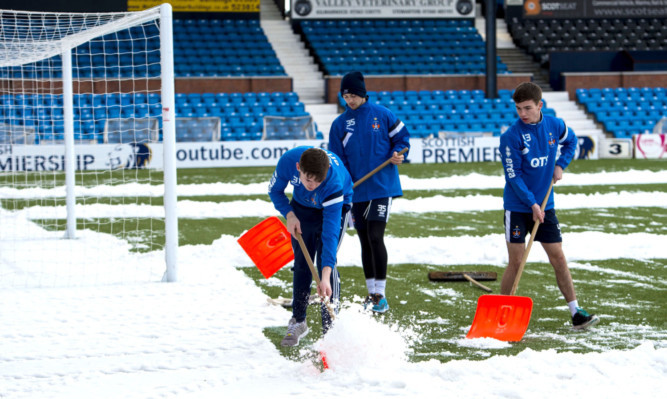
I’ll be following The Sunday Post’s survey on winter football with interest.
From my own personal experience, I’d warn that this is a subject in which the traditionalists won’t yield without a fight.
Fifteen years ago, while working as an agent and media pundit, I felt passionately enough about the subject to compose and send a letter to Roger Mitchell, then the SPL’s Chief Executive.
Have your say on summer football hereAt the time, the SPL operated a one-month break which begun immediately after the New Year games.
But when I did my own research, I found that 90% of the total number of postponements occurred in either January or February. Because of that, I argued the sensible thing to do was have a two-month break.
Clubs need to play a certain number of fixtures for their financial stability. To ensure they were able to do so, I proposed the season start early and finish late.
Under my proposal, the first half of the campaign would run from July to the end of December and the second from March to June.
Players would still get a summer break, but it would be reduced to around five weeks.
The response was good, initially at least. Roger wrote back to me and told me the SPL were impressed by what I had to say. They had decided to form a committee and wanted me to come along and make a personal presentation to a Hampden Park meeting of SPL members. I was happy to do so.
To be honest, I expected to get a lot of stick because I know a lot of people are actually fans of winter football.
There is an argument that games actually give people the chance to get out of the house when otherwise they might be cooped up for days. And that going to the game gives them a chance to socialise with friends out in the fresh air.
I follow that logic, but football is an entertainment and players need decent surfaces on which to perform to their full capabilities. They also should not be put at undue risk of injury by the conditions.
As it turned out, the committee members and I remember Campbell Ogilvie and Willie Miller were both there could not have been more appreciative of my proposals.
The response was universally supportive, and I left genuinely optimistic change could be coming.
I was right but not in the way I thought.
At the end of the 2000-01 season, the winter break was SCRAPPED!
Alex McLeish accused the SPL of taking the game back to the Dark Ages. Martin O’Neill and Walter Smith were among those who would later call for it to be reinstated.
Personally, I got no explanation whatsoever as to why the decision was taken.
My suspicion was that some clubs hated the break in their income. It seemed they never wanted the winter break in the first place, and never really stopped lobbying against it.
The current system is a compromise, in that it allows clubs to postpone a fixture and nip abroad for some warm-weather training. Those who don’t are free to carry on playing.
The reality, though, is that only Celtic choose to jet off, and in the past three years they have been to the far south of Spain, Turkey and Gran Canaria.
And while that remains the case, those pushing for change will have their work cut out for them just as I had.

Enjoy the convenience of having The Sunday Post delivered as a digital ePaper straight to your smartphone, tablet or computer.
Subscribe for only £5.49 a month and enjoy all the benefits of the printed paper as a digital replica.
Subscribe